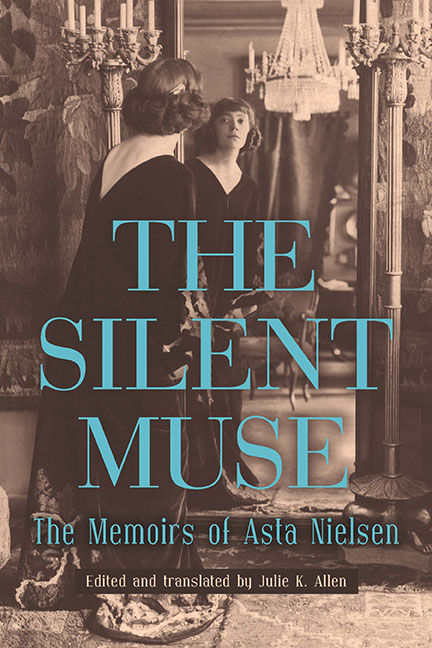Foreword
Published online by Cambridge University Press: 16 July 2022
Summary
“Lower the flags in her honor; she is incomparable and without peer.” So wrote early film theorist Béla Balázs of Asta Nielsen in his 1924 book, Der Sichtbare Mensch /The Visible Man, arguing that the Danish actress’s capacity for expressive gesture transcended language, producing an emotional meaning, a felt sensibility, that was uniquely cinematic. It was also decidedly sensual. Indeed, anyone who has had the privilege of watching Nielsen's sinuous, writhing body as she lassos a hapless gaucho in the famous dance scene from her first film, Afgrunden /The Abyss (aka Woman Always Pays, 1910), will understand why her name became a symbol of emancipated femininity in innumerable countries almost overnight. This shocking expression of female sexual desire—this dance that declares lust and pride, longing and addiction, aggression and eroticism—reminds us that the history of cinema, at its finest, is a sensory affair, an affective charge that moves people in often unpredictable ways.
When I first saw “Die Asta” on-screen at the 2002 Giornate D’el Cinema Muto festival in Pordenone, Italy, the theater shimmered with an irrepressible energy. The film was Engelein /Up to Her Tricks (aka Little Angel, 1914), a comedy in which the thirty-two-year-old actress plays a seventeen-yearold girl pretending to be twelve in order that her uncle does not realize that her birth preceded her parents’ marriage. This somewhat bizarre plot intensifies when Jesta becomes attracted to her uncle. I can think of no other actress who could make this role not only believable but also whimsical, poignant, and strangely erotic. In one memorable scene, Asta as Jesta sits at a desk wearing a loose pinafore, carefully placing flowers one by one around a love letter she has written to her uncle. She is a gauche teenager, aching with unrequited love. But, as she swivels on the chair, spine curving slightly as she hugs herself and sighs, she glances down at her bare knee. Suddenly, she becomes a prepubescent girl. She pulls her knee up, fully absorbed, and begins to pick at what may be a scab or bruise. Is she child or woman? Innocent or decadent? Cherub or temptress? As Asta/Jesta swiveled back to the desk, cradling her uncle's pipe and miming a sucking gesture, I stood up, swept to my feet with fellow festivalgoers as the theater roared with applause.
- Type
- Chapter
- Information
- The Silent MuseThe Memoirs of Asta Nielsen, pp. xi - xviPublisher: Boydell & BrewerPrint publication year: 2022



